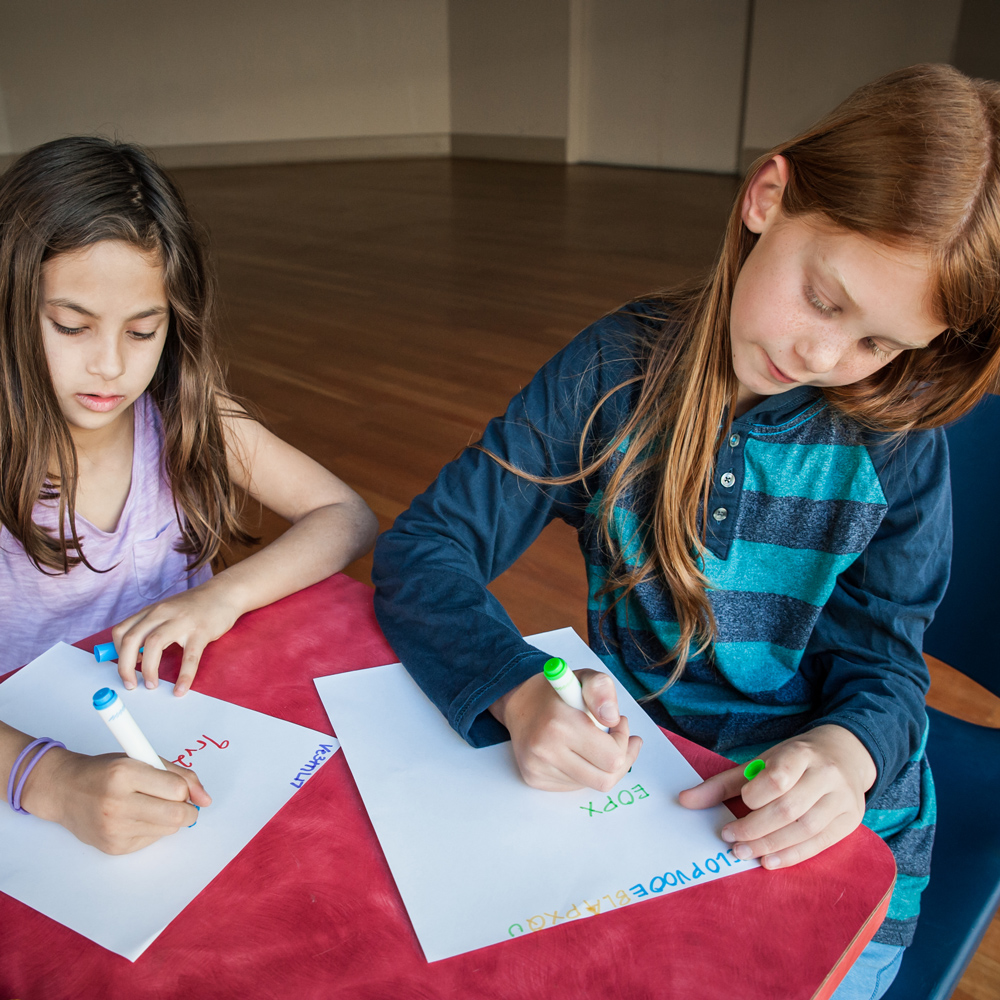Generate sentences as quickly as possible in reaction to random streams of alphabet letters called word ticklers. This activity helps children practice flexible thinking skills.
Materials Required
- Paper
- Something to write with
Instructions
1. Write down a list of word ticklers by putting together random streams of letters. Use the following word ticklers to get started:
- Kcslkdfsfpoicvm
- Jzifnovdmio
- Pocdvujp
- Mnzxcbudnf
2. Look at the first word tickler and generate a sentence as quickly as possible. What comes to mind when seeing those letters together in that way? The sentence doesn’t have to make complete sense. Don’t worry if this takes a little getting used to. Here are a few examples:
- Osidfzhobu = “Outside is freezing, how about you?”
- Jruhowieurskesoim = “Just how weird you ski sometimes.”
- Urjoegijrop = “Urgent egg drop.”
3. Now, come up with multiple sentences for each word tickler.
Additional Tips
Try these add-on activities:
- Once all the word ticklers have been used, create more or have someone else write some new ones. Even a cat walking across a keyboard could generate some good word ticklers!
- Turn this into a group activity. All players start by using the same word tickler, but each person comes up with their own sentence. Once everyone has written down their sentence, everyone shares with the group.


